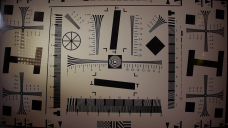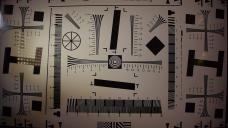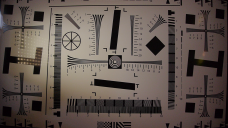
Please, support PV!
It allows to keep PV going, with more focus towards AI, but keeping be one of the few truly independent places.
It allows to keep PV going, with more focus towards AI, but keeping be one of the few truly independent places.
Video resolution: GH2 and GF1 compared
-
Here is a thread on how the GF1 video resolution compares to the GH2.
http://forums.dpreview.com/forums/readflat.asp?forum=1041&message=38912742
-
-
Thanks for the careful tests, mpgxsvcd. However, I'm not seeing any evidence that the GH2 MJPEG 1080p frame is upscaled from 720p, as you claim. Comparing the GH2 AVCHD 1080p frame (1267851.jpg) to the GH1 MJPEG 1080p frame (1267116.jpg) in Photoshop, I see the same resolution-dependent aliasing artifacts in both images. While the MJPEG frame does look a bit softer than the AVCHD frame, if it were upsampled from a lower resolution, I would expect to see telltale scaling artifacts in the fine diagonal lines of the test patterns.
-
@LPowell
It is definitely up-scaled. You can see the clear difference in resolvable resolution. Up-scaling and scaling in general does not have to cause perceivable aliasing. Remember the GH2 is always scaling except for when it is in ETC mode. The aliasing is almost nothing unless you use the the IR mode.
I don't own a GH1 by the way so none of the tests were done with that camera. I wish I had one to compare b-frame with non b-frame footage.
Here is a link to the original frame grabs. The .png files were produced with VLC player by stopping the video, turning scaling off, and then using the still function to take a frame grab.
http://twills.fatcow.com/Share/Video%20Resolution/ -
@Vitaliy
Sorry I didn't have time to upload everything here this morning. I have uploaded the original frame grabs in .png format just for your site though. Can't wait to see how the next Ptool improves on these though. I don't need the additional MJPEG settings anymore. This testing was enough to convince me not to really bother with MJPEG much. It is good with the GH2 but not nearly as good as the true 1080p AVC-HD modes.
I would quit messing with the camera if we ever get 1080p @ 60 FPS with a high bit rate. That would satisfy all of my needs. -
I spent (wasted?) a whole weekend shooting charts with the GH1 and GH2, and the main difference that I saw was noticeably more artifacts in GH2, as well as haloing. I'm guessing it it just more sharpened in cam. A lot of the junk in the image disappears when you step back from the screen, and then the GH2 looks a bit sharper. The other thing, on my cam anyway, is the ISO 800 is a bit noisier on the GH2 than the GH1 (running the BP patch). But the thing is, the GH2 takes very good video, I just don't think it is better at everything. Easier to use, no question. The GH2 hack may change everything, can't wait, but I'm still hanging on the GH1. I'm also willing to believe the lens plays a role in the "junk" in the video, possibly in the way in which fine detail is resolved before it hits the codec.
Re: the images above, one has a lot of noise and one has a lot artifacts, so I don't have a strong preference except that if you are not shooting charts the blotchy noise is maybe more of a problem.
I'd like to see the same chart with maybe even, high CRI lighrs. -
@DrDave
Remember you can completely control the amount of sharpening in the GH2. Turn off IR and turn down the sharpening and that affect disappears completely. I have tested the GH2, GH1, and AF100 with the resolution chart. With sharpening turned all the way down in 1080p @ 24 FPS mode they all look surprisingly similar.
The two images above were posted to show that 1080p MJPEG does not have the detail of 1080p @ 24 FPS AVC-HD. -
slightly on a tangent but still relevant is that if you compare the raw output of the gh2 and nikon's flagship full frame model, or canon's using the dpreview raw compare, there is not much difference in resolution at all. certainly not enough to be noticed without pixel peeping. yes there is a change in dof, lens artifacts, but actual sensor resolution, i dont think there is much difference at all.
so i cant imagine that there would be much difference between the gh2 and gh1, i think it is more the in-camera processing of the video that would effect the perceived sharness and resolution. -
@mpgxsvcd Yes, you are right, I noticed also at ISO 800, where I see the big difference in noise, is that turning down the contrast one click makes a difference in noise, and so on. The thing is, is you tweak each cameras settings, the final images become fairly close. But the other thing is, on the GH2 I don't really see the artifacts and haloing so much at a reasonable viewing distance when shooting most scenes, that is, not charts. This makes the cam seem sharper.
There is a question in my mind whether the GH1 will grade betterr in terms of sharpness with a good sharpening plug-in as well. After a while, I just got tired of shooting charts.
I also think the lens pairing is really crucial. My 14-45 just looks a bit smoother on the GH1, and the 20mm looks great on both, and the 85mm Nikkor 2.0 also great on GH1. Maybe a really sharp lens of a certain focal length compensates for the in cam sharpening difference in a smooth, detailed way.
Maybe certain lenses have a profile that is sensor/codec friendly. But then these are very subtle differences. I do feel that for the GH1 it is very important to have both a sharp lens and excellent color rendition in the lens to get a good result. Conventional wisdom is that for video, the sharpness of the lens is not crucial. However, I would disagree. The Panasonic 20mm, Nokkor 85/2 and 105/2.5, the Rokkor 50mm, the Vivitar 90 macro, these lenses make obvious difference in the video, and the difference is bigger than the difference between the GH1 and GH2. The Nikkors have great contrast, the Rokkor adds rich color, and so on. Now maybe the perceived nump in image quality is not the sharpness, but I don't get those results with my other, less sharp lenses.
Another way to look at it is with a really sharp edge to edge prime that is sharp wide open, the GH1 really shines as it adds some resolution, up to a point, of course. Whatever junk in going through the lens is modulated in a sensor friendly way. Just speculating, of course. Anyway, I would not bet I could pick one over the other on a big screen from two meters away if the sharpness/contrast/NR/color/wb/sat/curves and so one were tweaked individually for each camera. The difficulty is really matching the sensitivity and image processing. If you shoot the same scene, the cameras just react differently. -
mpgxsvcd, your resolution charts do show that AVCHD 1080p produces sharper images than MJPEG 1080p. However, I don't see how those test images back up your theory that the MJPEG image was actually upscaled from a 720p image. Since Panasonic has not revealed the technical details of their scaling algorithms, we can only speculate on what may be going on in the image processing steps that occur before the image is encoded into AVCHD or MJPEG formats. Your claim that the GH2 MJPEG mode uses a native frame size of 1280x720 would imply the following MJPEG processes:
1. The 16-megapixel RGBG image sensor output is scaled down to 1280x720 RGB pixel resolution.
2. If in WVGA, VGA. or QVGA modes, the image is resampled to a lower resolution.
3. If in HD mode, and width and/or height settings are different than 1280x720, the image is resampled to a higher or lower resolution.
4. The resulting image is converted to YCC color space and encoded in MJPEG.
My view is that there's no compelling evidence that forces us to conclude that a second resampling stage must be occurring. Panasonic engineers needed an algorithm capable of scaling a variety of image sensor arrays (varying from 12-16 megapixels) down to a variety of different frame sizes and aspect ratios (HD, WVGA, VGA. and QVGA). Given these diverse requirements, I think it far more likely that they developed a single general-purpose scaling algorithm that uses the width and height patches to produce any frame size desired from any of the G-series image sensors.
You can see evidence that supports this theory in your AVCHD and MJPEG resolution charts. On the left side, there's a vertical stack of thin horizontal lines labeled from 1 down to 10. As the spacing of these lines is narrowed, the 1080p scaling causes aliasing effects to occur in the 6-8 range that produce irregular contrast patterns between the black horizontal lines. If the MJPEG image was produced with a different scaling algorithm that started with a 720p image, it would show different patterns than the 1080p AVCHD image. To the contrary, the contrast patterns in the two images are virtually identical. That strongly implies that the two images were both scaled down to 1080p from the same high-resolution source image. -
@LPowell
No Panasonic sensor could output 16 or 13Mp even in 24fps.
So it is not LSI that makes rescale, it is sensor setting that allows necessary binning and transferring much fewer amount of data from sensor to main chip. -
Yes, I was over-simplifying the details of the image sensor demosaicing process by describing it as a scaling algorithm. Since it's Panasonic's trade secret, we may never find out exactly how it's done. The issue I'm evaluating here is whether there is a second MJPEG resampling step performed after the demosaicing stage, as mpgxsvcd has claimed.
-
Some pictures are jpgs because they are the upscaled variant of the png files. All of the png files were produced in an identical manner and there should be one of them for each scenario. I only included the jpg files to show that if you upscale the 720p MJPEG to 1080p you get the same thing as recording in 1080p MJPEG.
I realize that I accidentally included the jpg link in my post. I have corrected that now. However, I can't tell the difference between the .jpg and .png files. They look identical to me. -
@stonebat
I don't see how you could come to any other conclusion. More importantly it is clear that the 720p of the GH2 is better than either the 720p MJPEG or 720p AVC-HD of the GF1. It might even be fair to say that the GF1 is equivalent to the G2,G3, and GF2 since they all share the same sensor. Here are some links to sites that have tested those cameras and they all score equal or less than the GF1 on video resolution.
http://www.camcorderinfo.com/content/Panasonic-Lumix-GF2-DSLR-Camera-Review.htm#motion&sharpness
http://www.camcorderinfo.com/content/Panasonic-Lumix-DMC-G3-DSLR-Video-Review.htm#motion&sharpness
http://www.camcorderinfo.com/content/Olympus-E-P3-DSLR-Video-Review.htm#motion&sharpness
Remember, just because it says 1080i or 1080p doesn't necessarily mean it is better. I think it is fair to say if video resolution is important to you then the GH2 will be the best option. -
I agree with mpgxsvcd on GF1/G2 image quality and stonebat on 1080p AVCHD being sharper than 1080p MJPEG. I had both a GF1 and a G2 and their image sensor was noticeably noiser than the GH1's. Not sure yet about GH1 versus GH2, I think it'll be hard to tell until they're both optimally hacked. DxOMark actually ranked the GH1's sensor a bit higher than the GH2:
http://www.dxomark.com/index.php/Cameras/Compare-Camera-Sensors/Compare-sensors/%28appareil1%29/630|0/%28appareil2%29/677|0/%28onglet%29/0/%28brand%29/Panasonic/%28brand2%29/Panasonic -
Hello everyone!
I don't quite get it. Compared to a consumer camcorder, GH2 still looks unpreferrably soft and aliased. Is it really so? Please someone put a better GH2 video res test pic here!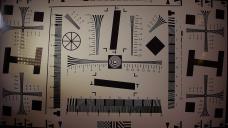
 2 GH2 1267858.jpg1920 x 1080 - 1M
2 GH2 1267858.jpg1920 x 1080 - 1M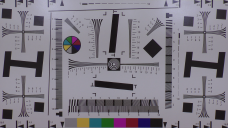
 3 panas-hdc-tm900-mira.png1920 x 1080 - 3M
3 panas-hdc-tm900-mira.png1920 x 1080 - 3M -
Not fair comparison. Totally different lightings.
-
3k is tricky...
Start New Topic


Howdy, Stranger!
It looks like you're new here. If you want to get involved, click one of these buttons!
Categories
- Topics List23,986
- Blog5,725
- General and News1,353
- Hacks and Patches1,152
- ↳ Top Settings33
- ↳ Beginners255
- ↳ Archives402
- ↳ Hacks News and Development56
- Cameras2,364
- ↳ Panasonic993
- ↳ Canon118
- ↳ Sony156
- ↳ Nikon96
- ↳ Pentax and Samsung70
- ↳ Olympus and Fujifilm100
- ↳ Compacts and Camcorders300
- ↳ Smartphones for video97
- ↳ Pro Video Cameras191
- ↳ BlackMagic and other raw cameras116
- Skill1,960
- ↳ Business and distribution66
- ↳ Preparation, scripts and legal38
- ↳ Art149
- ↳ Import, Convert, Exporting291
- ↳ Editors191
- ↳ Effects and stunts115
- ↳ Color grading197
- ↳ Sound and Music280
- ↳ Lighting96
- ↳ Software and storage tips266
- Gear5,420
- ↳ Filters, Adapters, Matte boxes344
- ↳ Lenses1,582
- ↳ Follow focus and gears93
- ↳ Sound499
- ↳ Lighting gear314
- ↳ Camera movement230
- ↳ Gimbals and copters302
- ↳ Rigs and related stuff273
- ↳ Power solutions83
- ↳ Monitors and viewfinders340
- ↳ Tripods and fluid heads139
- ↳ Storage286
- ↳ Computers and studio gear560
- ↳ VR and 3D248
- Showcase1,859
- Marketplace2,834
- Offtopic1,319
Tags in Topic
- gh2 1278
- gf1 27
- resolution 14



